We were recently running some tests in our lab on two SKUs, the Intel Xeon Platinum 8158 and the Intel Xeon Gold 6136 to investigate exactly what the differences are. On paper, the chips look almost exactly the same but the Intel Xeon Platinum 8158 is almost three times the price. What we found was that the main driver of price comes down to a niche feature that reinforces our belief that the Intel Xeon Platinum line is not targeted at the same market as AMD EPYC for comparison purposes.
Intel Xeon Platinum 8158 v Intel Xeon Gold 6136 Performance Differences
We ran these chips in single and dual socket configurations to see what the difference in performance is for the mainstream market. Specs alone seem to dictate that these chips are relatively similar, but we wanted to test it out. Our suite takes several days to run and gets each CPUs heavily heat soaked in the process. The objective was to ensure that the process shows real-world 24×7 operation performance, not best case performance. We are not going to publish the full suite since the results were repetitive.
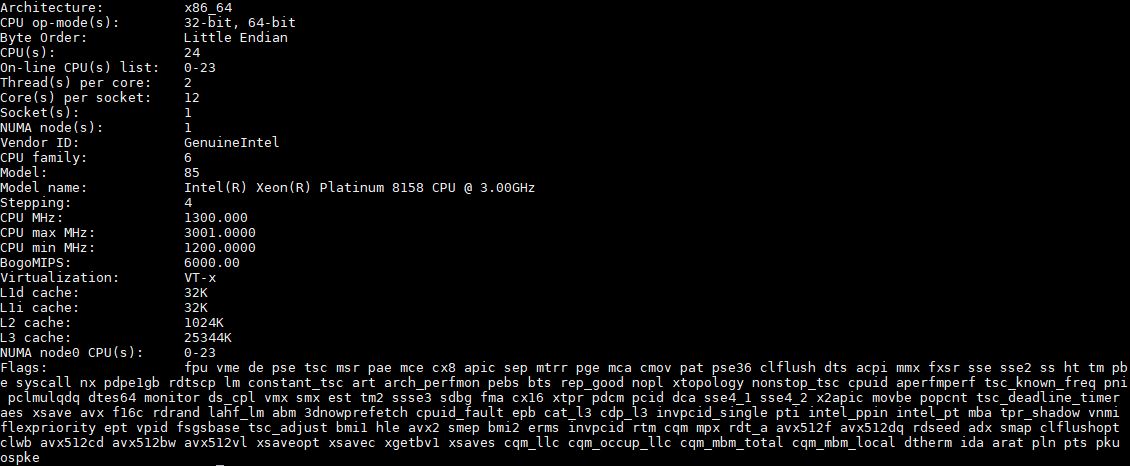
After we started looking at the data, the single and dual socket benchmarks had the same pattern so we are going to publish the single socket numbers and in our upcoming Intel Xeon Gold 6136 review set to go live in a few weeks, we will have a broader set available.
Linux Kernel Compile Benchmark
One benchmark we typically use for this is our Linux kernel compile benchmark. This touches a decent amount of the total system performance factors and is something many Linux admins and developers have the first-hand experience with.
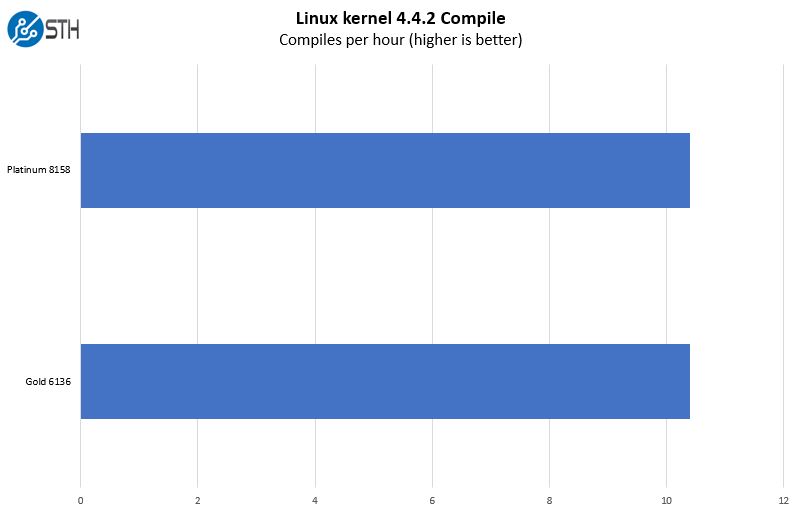
The Intel Xeon Platinum 8158 managed a small victory here, albeit within the test’s margin of error. That is going to be a theme.
OpenSSL Verify Benchmark
Here is a good example of non-QAT accelerated OpenSSL Verify tests on the same set of CPUs:
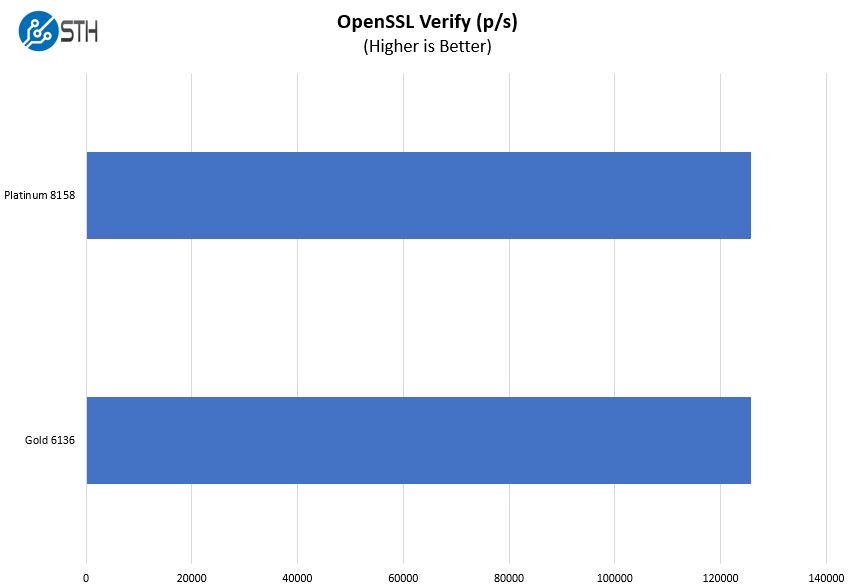
Again on the OpenSSL verify test, we see slightly better performance from the $7007 Intel Xeon Platinum 8158 over the $2460 Intel Xeon Gold. Given test variations, this is a sub 0.1% delta so we consider these numbers identical.
GROMACS AVX-512 Performance
Our small GROMACS simulation lets us test a real-world HPC workload that takes advantage of the most system performance possible. That includes using AVX-512 extensions when available.
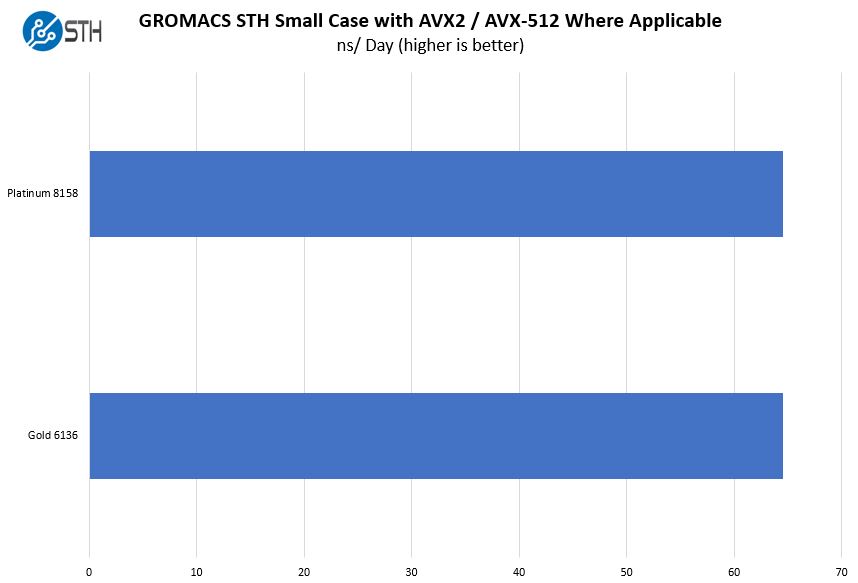
We wanted to ensure that there is no major performance impact even on the higher-end functions such as AVX-512. This test uses a lot of power so we wanted to see how it would perform with the different CPUs. Essentially, the differences over the course of our runs ended up being a normal test variation. This confirms that the two SKUs perform essentially identically.
So What is the Difference?
The best answer we can give our readers is that the Intel Xeon Platinum 8158 has a steep tax for being 8-socket capable. From a performance perspective, the two options are nearly identical which makes sense given the Intel ARK comparison.
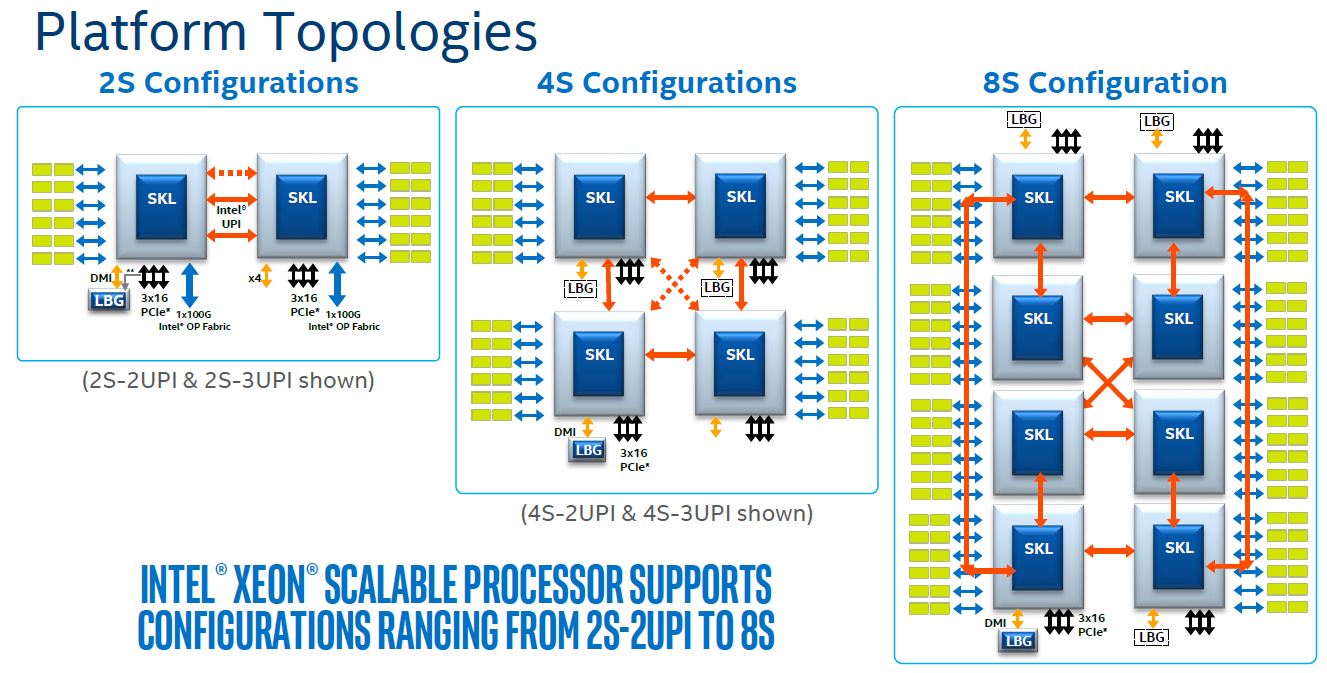
This 8-socket “tax” makes sense. 8-socket systems are relatively rare today and they are costly across the board. Also, there is less competition in the 8-way x86 space. AMD EPYC 7000 series CPU cannot scale beyond 2-sockets in their current form. Intel’s main competition in this arena comes from architectures like IBM Power and Oracle Sparc chips that cost a lot per chip. Simply put, the entire pricing strategy of this Xeon Platinum part is due to the small market niche that it competes in.
Final Words
We wanted to publish this article for a simple reason: we got it wrong. When the Intel Xeon Scalable platform came out in July 2017, we published our Intel Xeon Scalable Processor Family SKUs and Value Analysis. Here was one of the charts:
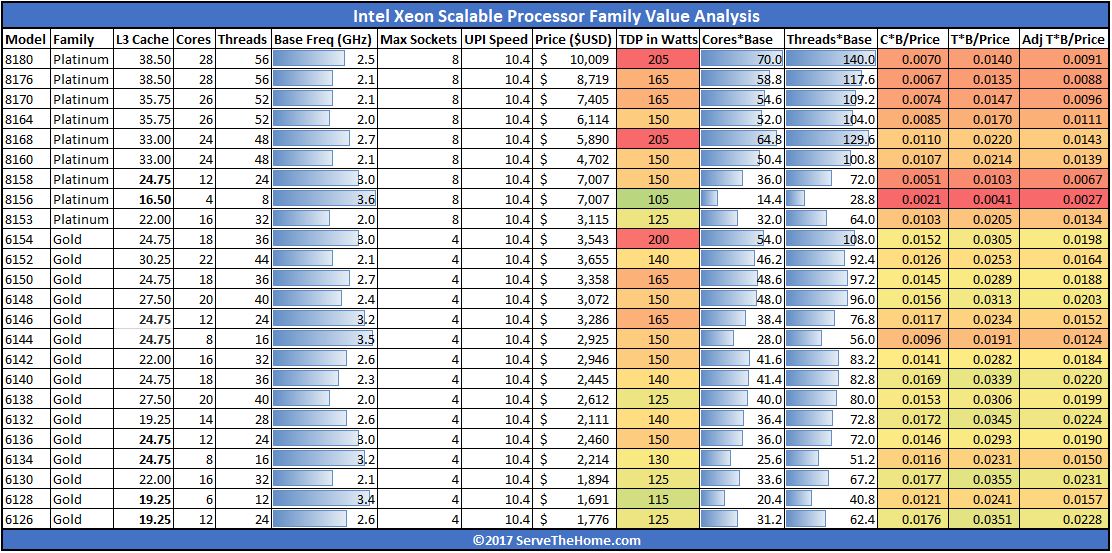
Other sites have published similar value analysis pieces but the point remains, we completely missed the point. When you look at this chart, the Intel Xeon Gold 6136 and Intel Xeon Platinum 8158 seem worlds apart. The $2460 Xeon Gold versus the $7007 Xeon Platinum yields essentially the same specs and performance. The only place that the Xeon Platinum 8158 should ever be used over the Xeon Gold 6136 is in 8-socket systems.
Undoubtedly, the Intel Xeon Scalable platform was an opportunity for Intel to charge more, and they took advantage of it. At the same time, a lot of the negative press has been due to two factors:
- Limited understanding and actual hands-on testing of the performance of the SKUs; and
- Not fully understanding the positioning of the SKUs.
There are very few sites that have the resources to test these SKUs. Buying pairs of both of these SKUs, as an example, cost us around $20,000. At the same time, it is not fair to use a comparison like we originally did comparing the Intel Xeon Platinum 8158 to the Xeon Gold 6138. The former is really only meant for the 8 socket use case, one where the latter cannot even function.

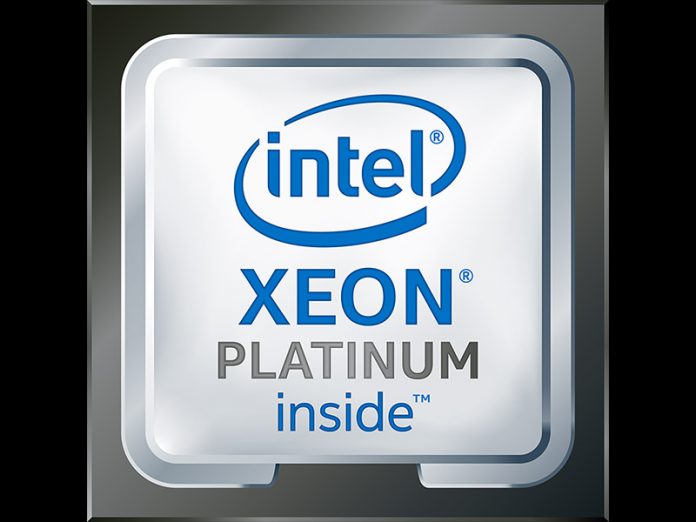



Why still is this 7000 dollar? The 8160 is also 8 sockets capable and has twice the cores, for only 4700.
Chi – you have to ask Intel. It may be for those with per-core software licensing where the 3.0GHz base frequency and fewer cores is desirable.
I’d say you’re right on the money Patrick.
If you haven’t been around software that hasn’t been optimised for the sudden uptick in cores in recent years, it can be surprising, but there’s a LOT of industry and/or company level software where it makes more sense to just throw the fastest cores you can find into a system and take the extra cost on the chin, as when you weigh that against the cost of dev time (especially if it’s a small team) the former is FAR cheaper.
Intel knows that, they have the power in this situation, so they crank the price. Good old market segmentation.
Although that said, unless you HAVE to virtualise multiple instances of said software on one machine… the 8158 is actually still a somewhat confusing…
Hasn’t this always been the case in every generation?
To clarify: Opteron 248 vs 848, 2200 vs 8200 or something, Xeon 1600 vs 2600, 4600, … they simply cannot run in certain configurations due to missing/disabled/idk interconnects.